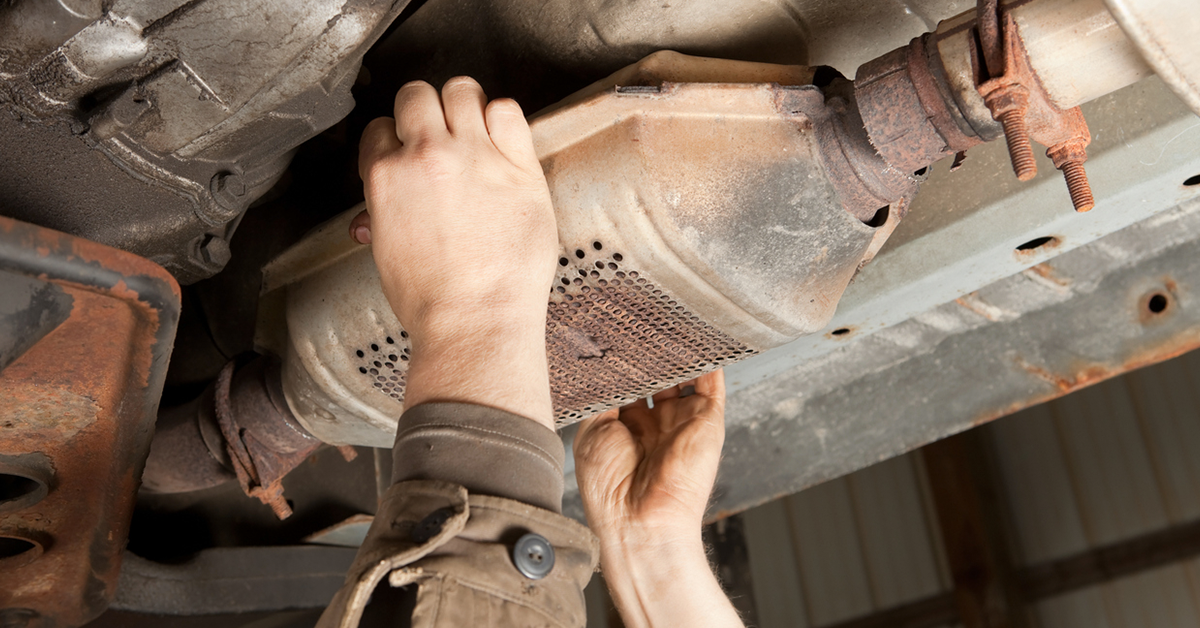The incidence of catalytic converter theft from vehicles continues to be on the rise throughout the country, burdening both organizations and individuals with replacement and repair costs. According to BeenVerified, these types of thefts were up 540% than in all of 2020, a year which had already seen its own sizeable year-on-year increase. If your organization has been a victim of this theft, you know the importance of catalytic converter theft prevention. Property Casualty 360 cites some of the driving causes of these increases from a statement made by the president and CEO of the National Insurance Crime Bureau (NICB), David Glawe:
“We have seen a significant increase during the pandemic. It’s an opportunistic crime. As the value of the precious metals contained within the catalytic converters continues to increase, so do the number of thefts of these devices. There is a clear connection between times of crisis, limited resources, and disruption of the supply chain that drives investors towards these precious metals.”
Cars and criminals – Protect your fleet
According to Consumer Affairs The average estimates for replacement costs for a passenger vehicle’s catalytic converter can be anywhere between $933 to $4,414 for both parts and labor. Costs can range as high as $8,000 for larger vehicles such as school buses, transit buses and larger trucks. These averages do not include the cost of any additional repairs which may be necessary if other parts, such as brakes and fuel lines, are damaged during the theft.
And if that wasn’t bad enough, replacement converters are becoming more difficult to find due to pandemic-related supply chain shortages and shipping delays. Ensure your organization takes the following steps for catalytic converter theft prevention this year.
What is a catalytic converter, and why are they being stolen?
All vehicles made after 1974 are required to have a catalytic converter, which reduces vehicle emissions and improves air quality. The devices are attractive to thieves because they contain precious metals such as platinum, palladium and rhodium. While the price of rhodium varies day-by-day depending on the market, a single one-ounce bar peaked at nearly $30,000 in 2021.
It takes approximately 13 passenger car converters to collect an ounce of rhodium. While this number alone may seem like enough of an inconvenience to preclude thieves from investing the time and energy to amass them, unfortunately, converters are typically very easy to steal. Located in the vulnerable undercarriage, an experienced thief can slide underneath a vehicle, remove the converter and walk away with it in mere minutes. It’s all too easy to “surgically remove” a converter from its piping, and many are small enough to fit inside a duffel bag.
Given the relative ease of theft and the high potential for reward, converter theft can be a lucrative business to a determined thief. In fact, in some unfortunate cases, it’s been reported that victims of converter thefts will commit time and resources to replace stolen parts, only to also have the replacement parts stolen again, shortly after installation.
Which states are experiencing the highest rates of catalytic converter theft?
e led by New York, which saw nearly 184% increase last year. New Jersey, Illinois, Connecticut and Pennsylvania also saw big increases in thefts. The 2022 hotspots for catalytic converter thefts include:
- New York
- New Jersey
- Illinois
- Connecticut
- Pennsylvania
- Florida
- Massachusetts
- Delaware
- Maryland
- Louisiana
Theft estimates based on NICB theft report and Google search trend analysis. Adjusted for seasonality.
What steps can I take for catalytic converter theft prevention?
While it’s likely that thieves will continue to steal catalytic converters regardless of geographical location, there are several ways you can deter theft and reduce the risk to your vehicles.
Make your vehicles difficult targets. When a vehicle is not in use, park it in a secure garage or a heavily fenced and well-lit outdoor lot. If possible, take steps to visually reinforce the impression of ownership and surveillance at these locations by posting no trespassing signs, cameras, fencing, locks, outdoor lighting and other measures that are standard deterrents to all but the most serious thieves and vandals.
Install high-quality surveillance equipment at all your parking and garage facilities. Make sure the equipment can still capture footage in darkness in case a thief tampers with your facility’s lights before getting to work.
Make your converters difficult to remove by installing catalytic converter locks or other deterrents. Remember to consult with your mechanic and/or vehicle manufacturer to determine which add-ons may be suitable, and to ensure that doing so will not negatively impact any pre-existing vehicle warranties.
Unfortunately, vehicles are not only vulnerable when in storage – converters are known to have been stolen even when vehicles are parked in public places in the middle of the day. An experienced thief can steal a converter in less than a few minutes, even while parked on a busy street. When this happens, the unsuspecting driver of the vehicle is exposed to the additional risk of attempting to operate the vehicle as normal, unaware that systems have been compromised during their absence.
Installing a safeguard or protective measure onto a vehicle can be a great way to ensure protection regardless of its location. While these devices can still be bypassed by determined thieves, they can still go a long way to deter a theft from occurring. A catalytic converter lock can slow a criminal down, and most thieves rely on speed as a major factor in a successful getaway.
Engrave your vehicle’s VIN or license plate number on the converter. This helps law enforcement to track it down, especially if they encounter it in the possession of suspected criminals. Likewise, legitimate automotive parts dealers will likely be able to recognize the converter as stolen and report it if a thief tries to resell it.
Paint your converters a bright, “high-temperature” paint, such as hot pink. Similar to an engraving, this can be a signal to automotive part dealers and other vendors that the converter has been stolen. It also has the added benefit of being more difficult to remove – while an engraving can be sanded off with the right equipment, stripping an entire converter of a highly visible paint is much more time-consuming and difficult endeavor.
Recources:
Catalytic Converter Thefts Hit New Record in 2022 But Some States See Declines (beenverified.com)
Cost to Replace a Catalytic Converter (2023) | ConsumerAffairs
Rhodium Price Chart: Check Live & Historical Rhodium Spot Prices (moneymetals.com)
This article was originally published on the Arrowhead Tribal blog. It is used with permission and has been modified and updated to better fit the needs of our Preferred members.







